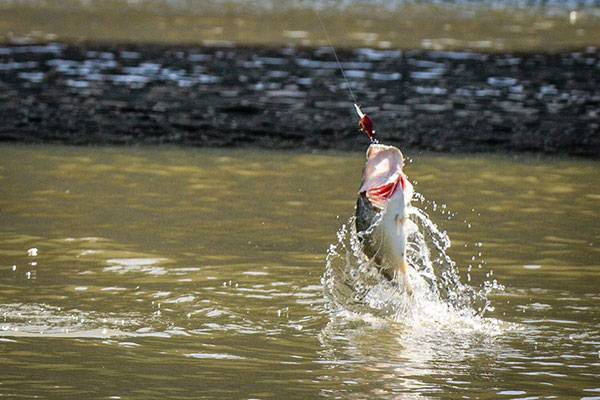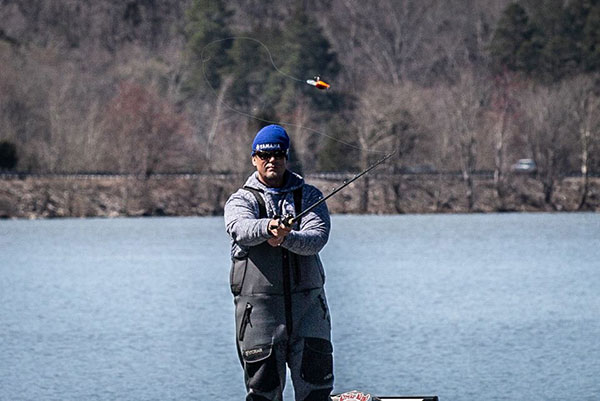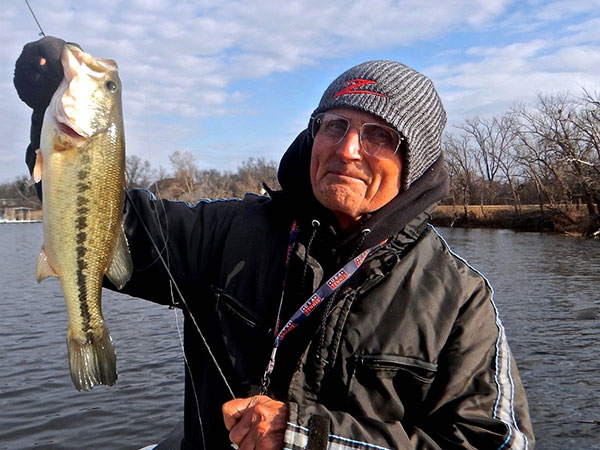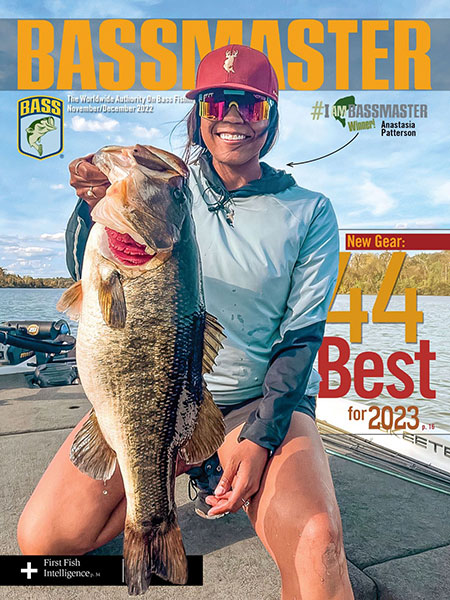- Details
Seaguar Report
 Bass jumping
Bass jumping
Part of what makes crankbaits such an effective tool in bass fishing is their ability to match a variety of forage. These baits come in many different sizes, diving depths, styles, actions, and a rainbow of color options.
While some months may be a little confusing, some guesswork is eliminated during the coldest months of the year as Bassmaster Elite Series pros Keith Combs and Brandon Palaniuk each reach for one type this time of year: flat-sided crankbaits.
Combs' Cold Water Cranking Approach
 Keith Combs Casting
Keith Combs Casting
Texas pro-Keith Combs' affinity for crankbaits is well documented. He's scored major tournament wins with them and while most of the time it's with jumbo deep-diving baits, he knows there's a time and place for other baits.
"For me, a flat-sided crankbait is a cold water deal," he said. "That time will vary based on where you live. Here in East Texas, it's when the water is around 50 degrees, and somewhere further north, like Tennessee, for example, the window might be when the water is around the 40-degree mark."
While some might assume that cold means it's time to head to deeper water, Combs says that's not always the case. "You can still focus on shallow water, but you want to be close to deeper water."
That opens up various areas, according to Combs and much of it will depend on where he's fishing.
- Details
By Ted Pilgrim
 Coldwater Bass
Coldwater Bass
While you’re reading this, huddled around the warm glow of your computer screen, Ned Kehde is almost certainly on the water. So long as one of the dozen or so of his local community reservoirs near Kansas City remain ice free, Ned will be afloat, casting his little finesse jigs, and hooking astonishing numbers of coldwater bass.
“For years, our goal was to catch 101 bass in a four-hour trip,” Ned concedes. “These days, especially on cold winter outings, we’re content to fish for two to three hours between 11am and 3pm. On average, we’re still catching about ten bass per hour—just enough bites to keep this old codger warm.”
Now nearly 83 years young, Ned still fishes more than most, adding hundreds of clicks to his well-worn fish-counter. Recently, between trips, we caught up with our friend, the legendary Ned Kehde, to talk shop and discover his latest tricks. As he’ll graciously tell you, anyone can catch bass with Midwest finesse . . .
Where are you fishing these days and what’s happening in these fisheries?
Kehde: Nowadays, we’re focusing on our many community reservoirs, catching largemouth bass on shallow water flats endowed with coontail and curly-leaf pondweed. Curly leaf, or crispus, is a winter-hardy aquatic plant that grows and produces foliage and oxygen all through the cold months. Finding either of these species can be a winter bass goldmine, especially while other anglers target submerged brushpiles and offshore structure. Contrary to the notion that coldwater bass stick to deep water, we continue catching bass in 5 to 10 feet of water all winter long.
- Details
BASS Report
 Anastasia Patterson
Anastasia Patterson
Besting a field of nearly 800 other B.A.S.S. members in the “I Am Bassmaster” cover photo contest, Anastasia Patterson of Sumter, S.C., is living out a calling for competitive angling that started when she was just eight while serving as an ambassador for the sport.
“I have so many Bassmaster magazines I have kept over the years, gotten some signed and even used them to help me learn new techniques,” said Patterson. “I never imagined I’d actually be in one, much less on the cover, and it really motivates me to work hard and fish harder so this hopefully won’t be the last time.”
More than 16 years ago, Patterson declared her desire to be a professional angler while attending the Elite Series Santee Cooper Showdown. Now balancing a career in event planning with tournament fishing, Patterson frequently went hunting or fishing before competing in pageants in middle school and high school. And while focused on breaking into the highest ranks of professional angling, she draws on past hurdles and doubters to help push her to succeed.
“I recognized that there weren’t many people on that stage who looked like me,” said Patterson of that tournament at Santee Cooper. “Not just the color of my skin, but the fact that there were no women.
“I told a guy in high school that I wanted to fish professionally, and he said that a woman would never make it, period. I let that swim around in my head for a while. Then, I decided to use it as fuel.”





